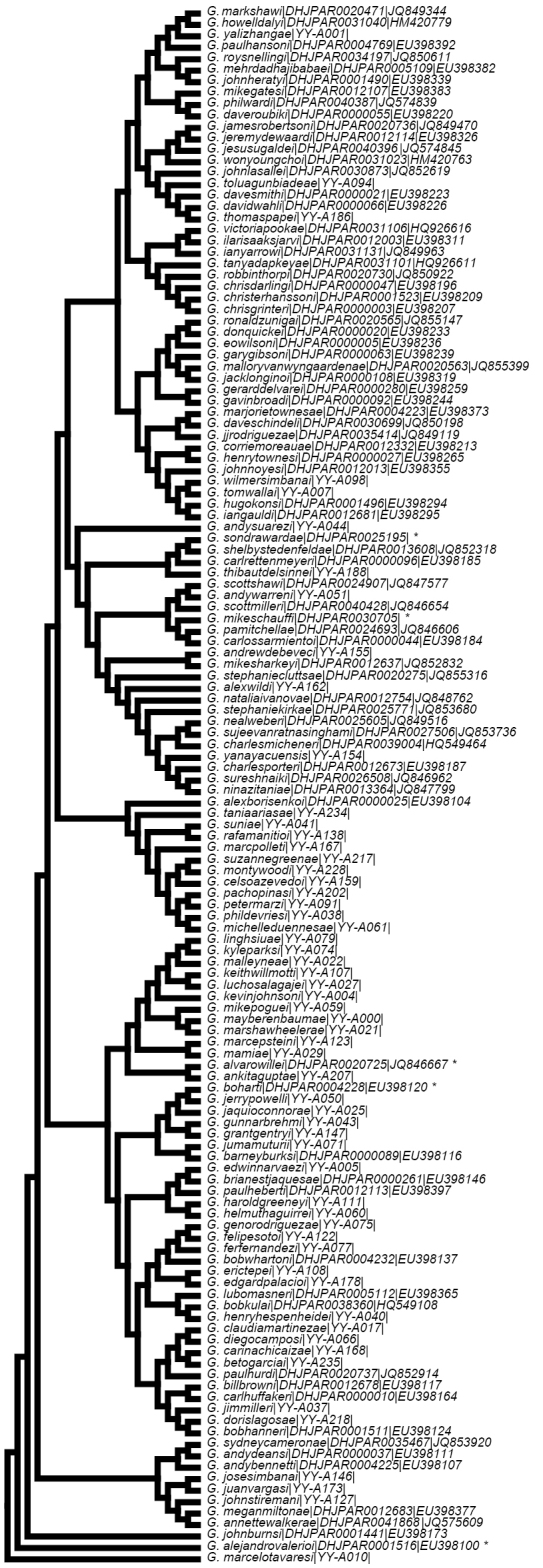Figure 1.

A tree of COI gene sequences from the new 136 species of Glyptapanteles is described here. The tree with the highest log likelihood (-12901.1226) is shown. Initial tree(s) for the heuristic search were obtained by applying the Neighbor-Joining method to a matrix of pairwise distances estimated using the Maximum Composite Likelihood (MCL) approach. A discrete Gamma distribution was used to model evolutionary rate differences among sites (5 categories (+G, parameter = 0.3431)). The rate variation model allowed for some sites to be evolutionarily invariable ([+I], 0.0000% sites). The tree is drawn to scale, with branch lengths measured by the number of substitutions per site. The analysis involved nucleotide sequences from 136 specimens using a total of 926 positions in the final dataset. Samples selected for this representative tree were the holotypes for each species except for five cases (indicated with an * on the tree) where the holotype was not successfully sequenced (G.boharti, G.alvarowillei, and G.alejandrovalerioi) or having sequence but with insufficient overlap to permit tree construction (G.mikeschauffi and G sondrawardae). In these cases, we substituted other high-quality sequences from the same species.
